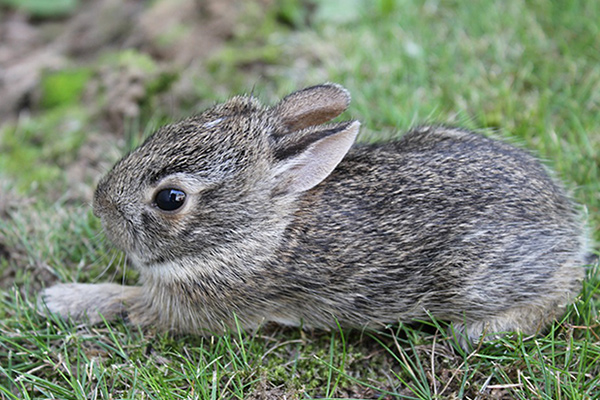Yesterday I received an email from Lisa, who wrote this:
Question: Ryder is really ‘molting’ now. I did not remember rabbits shedding like this. I looked online, and it looks like they usually shed in the fall and after winter the most. Correct? We are now brushing his coat each day to help with the fuzz. He seems like he kinda likes it. Rosie is not shedding much. Her coat is not as thick either. Any suggestions? I’m giving them some treats that have extra protein to help them to not have hairball problems. I know rabbits can’t vomit, so the hair can be a problem if they ingest too much. I don’t think that is an issue, but I’m keeping an eye on them.
Lisa is right in that rabbits do shed several times a year, usually every three months or so. They will alternate a light shed, which you may or may not notice, followed by a heavy shed, which you will most definitely notice.
Like cats, rabbits are very meticulous about grooming. They want to be clean and spend a lot of time licking themselves to ensure every hair is perfect. But, also like cats, they can get so-called hairballs if they ingest too much hair or if their gastrointestinal system slows for some reason. Rabbits will always have some hair in their gastrointestinal systems, but unlike cats, rabbit cannot vomit. Therefore, if they do develop a hairball, it can become a large mass of tangled hair and ingesta (food in their stomach), and it can completely block the pyloric juncture (exit in the stomach). This can cause the rabbit to die.
Tips For Avoiding Hairballs
1. Make sure your rabbit ALWAYS has access to plenty of FRESH WATER every day. We’ve found that rabbits tend to drink more out of a heavy water crock than a water bottle, but be sure to keep the crock filled with fresh water, refilling a couple times every day. Hydration is paramount for digestion.
2. Feed FRESH HAY AND LOTS OF IT DAILY! Veterinarians recommend that fresh grass hay such as Timothy hay make up 80% of a rabbit’s diet. If you are purchasing hay from a pet store, you may not be giving your rabbit food that he will eat and that is best for him. Most hay bags sold in pet stores are not fresh; many are dry, dusty, and yellow. That is because it can take up to a year for the hay harvested in the field to actually make it to the store shelf. Plus, hay in the pet stores sells for around $5 per pound. Bottom line: it is very expensive and usually in such poor condition that most rabbits will ignore it or use it as litter. So be sure to get FRESH HAY and lots of it for your rabbit so that he or she will enjoy eating it and so that it will help keep his or her digestive system moving.
3. Rabbits need to be brushed weekly, and long-haired rabbits such as angoras may need to be brushed every day. Brushing them (we use a Furminator) will remove all the loose hair, which means that as they groom there is less hair to ingest. Most rabbits enjoy a gentle brushing, and this can be a special time for you to bond with your bunny.
4. If your rabbit is in a heavy shed, you can easily remove some of the hair by gently pulling it with your hand. Some rabbits will lose a lot of hair in a single day or couple of days. Others will take a couple weeks to complete a heavy shed.
5. For long-haired rabbits, it is best to keep their hair trimmed to about an inch in length. This will also help with keeping mats from forming. BUT…please remember that their skin is VERY delicate. Have an expert or your veterinarian show you how to trim your long-haired rabbit. One thing we recommend when trimming hair is that you keep your fingers between the bunny and the scissors to avoid nicks or cuts.
By following these suggestions, you should be able to minimize the risk of your bunny developing a hairball. Remember, if your rabbit does stop eating for more than 12 hours, a trip to your veterinarian is necessary. And if you see patches of flaky skin, this may indicate fur mites. Again, a trip to your veterinarian is in order.
 MOHRS
MOHRS